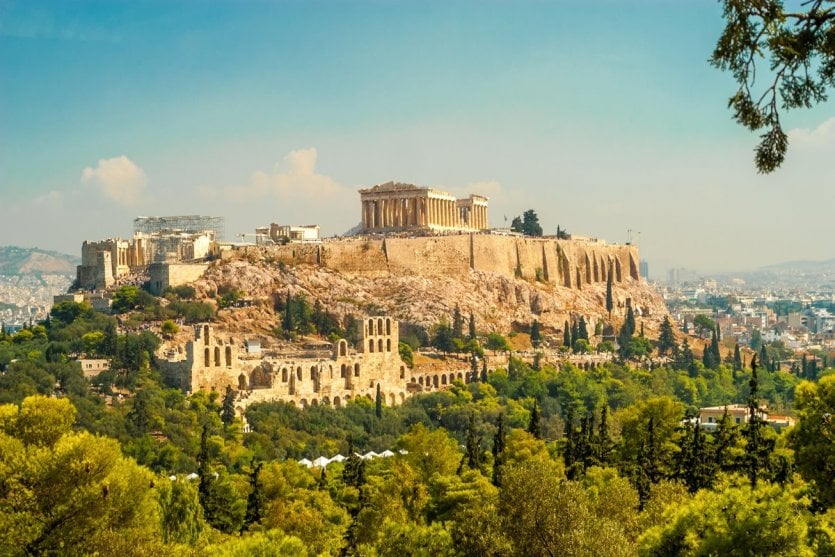
" Athens, either you love it or you hate it" many Greeks will tell you. However, this city cannot leave you indifferent. At first sight, its numerous concrete buildings, its noise and its heat will overwhelm you, but its charms will gradually seduce you as soon as you adopt the Greek way of life. Getting around is quick and easy, pedestrian walks line the city and the remains of the cradle of humanity are mesmerizing. The magic of Athens is enhanced by the warm personality of the Greeks who will be happy to welcome you. Of course, the media convey an unenviable image of the city... Yes, Athens is undergoing a metamorphosis and has suffered an economic shock, but it has managed to take advantage of it! Street-art is spreading, citizen initiatives abound and street shows are numerous. Set off to discover this border city between East and West which will, for better or for worse, capture your attention!
Are you continuing your trip to Greece after your visit to Athens? Check out our article on the must-do's in Greece!
1. The Acropolis
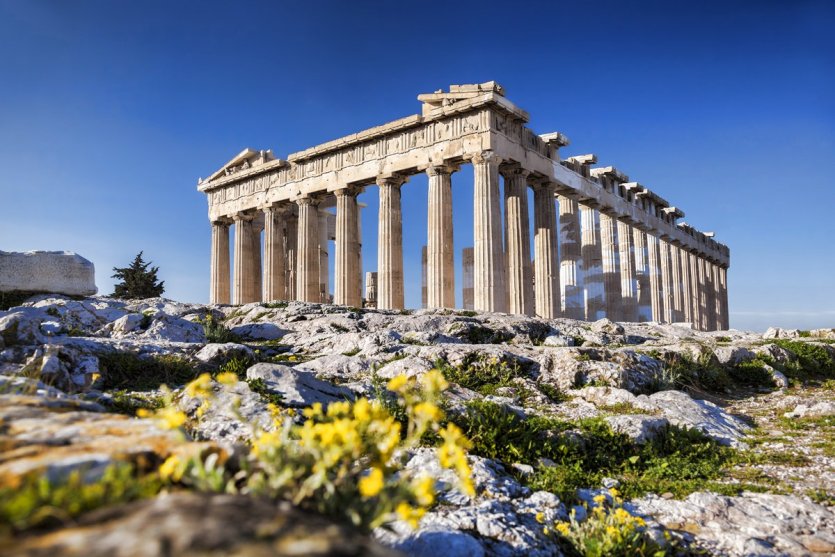
One of the cradles of humanity. It is on this rock that stands the famous Parthenon. A must-see during a trip to Athens, the Acropolis has a rich history. Construction, transformation and destruction mark out the life of this place. Whether man or nature, the Acropolis has had to face all attacks, which has greatly marred its past splendor. If at the very beginning of its life the site sheltered the palace of the king, it is more known to be the roots of the temple of Athena. Built in the 8th century BC, the ancient Parthenon was sacked by the Persians... It was only many centuries later, under Pericles, that the current Parthenon was born.
You want to make the most of your stay in Athens and avoid the queues? We advise you to book an all-in-one ticket for 7 of the main archaeological sites of the city, including the Acropolis, the Roman Agora and the Agora of Athens.
2. The Acropolis Museum
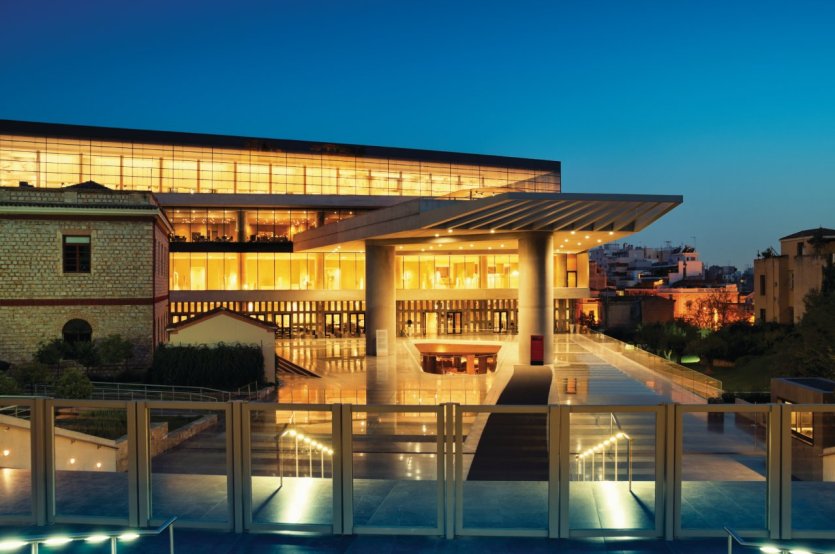
Opened in 2009, the Acropolis Museum was designed by the French-Swiss architect Bernard Tschumi. Made of glass and concrete, this modern colossus will offer you an incredible view of the rock of the Acropolis. Built on stilts, you can directly discover the archaeological remains of the city and antiquities from the Acropolis and all its periods. At the top of the museum, the Parthenon Hall will offer you a magnificent reconstruction of the mythical building. The friezes kept in the British Museum, which Greece is still waiting for the return of, are copied in plaster in order to give you the best possible immersion. An excellent complement to your visit to the Acropolis! To enjoy the museum with a ticket and an audio tour, click here and book your entrance ticket in a few clicks !
3. The Agora
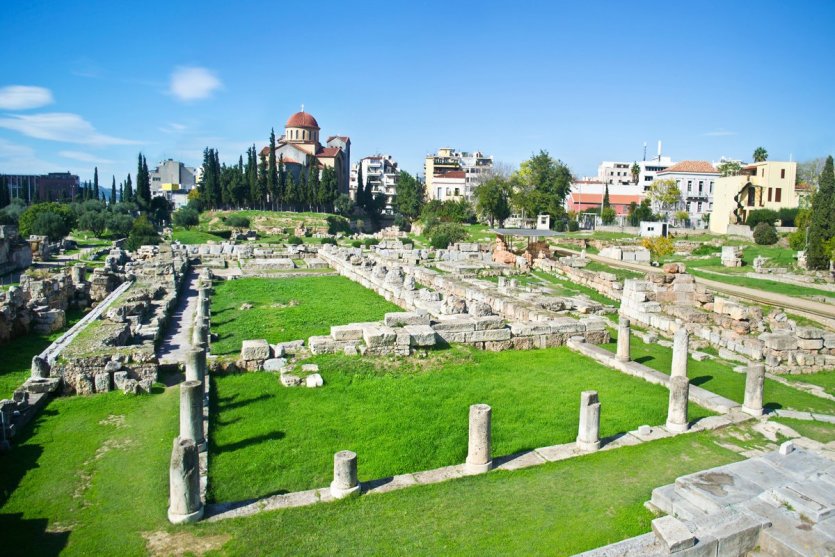
The center of every Greek city. This is where most political decisions were made and where prisoners were judged. Like the Acropolis, the Agora was rebuilt and refurbished many times. Whether it was the Persians, the Romans or the Heruli, each nation took pleasure in destroying this key place of Athens. During your visit to the site, you will come across ingenious relics such as a water clock dating back to the 4th century B.C. It is also possible to see the ancient building that was, according to hypotheses, the prison of Socrates. Archaeologists would have discovered there small vials containing the hemlock which would have poisoned the famous philosopher. Today, the mythical temple of Hephaestus, better known as the Theion and built from 450 BC, still overlooks the whole site. Click here to to reserve your ticket and avoid the wait at the entrance of the Agora.
4. The Olympiad: the Temple of Zeus

This colossal temple is undoubtedly the most interesting monument of the site of Olympia. It was dedicated to Zeus, king of the Olympian gods. Its construction lasted from 470 to 456 B.C. and was carried out thanks to the spoils of the war of Elis against Pisa. The columns were made of shell stone, but the tiles as well as the gargoyles with lion heads were made of Paros marble. The temple of Zeus like many other temples had a tragic fate: it was burned in 426, on the order of Theodosius II and destroyed in the 6th century by earthquakes, as well as the other monuments of the sanctuary. You can still see the columns and other architectural elements lying on the ground.
5. The Archaeological Museum of Athens
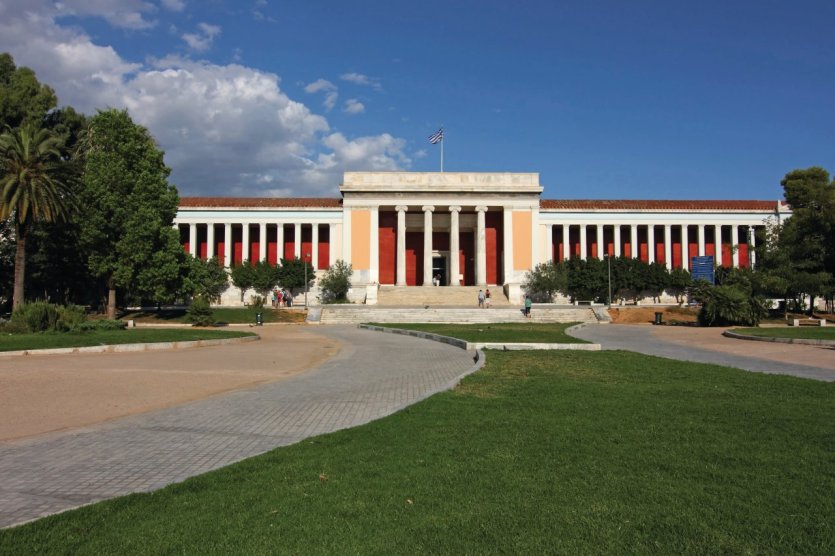
Completed in 1888, it will take you at least 3 hours to visit the impressive archaeological museum of Athens. In it, you will discover a multitude of collections retracing the history of Greek civilization from the Neolithic period to the end of the Roman Empire. Thus many figurines made of clay, stone or bone dating from -6600 to -3300 BC are present. Then the artifacts are no longer presented in chronological form but by locality. Thus, in the room of Mycenae, you will discover the famous mask of Agamemnon which, in reality, has no link with the Homeric hero. It is also in this museum that one of the largest collections of ancient bronzes is hidden, consisting mainly of ancient offerings reserved for the sanctuaries. The museum's star piece is the sculpture of the Horseman of Artemisia which is incredibly realistic thanks to the muscular movements made in the stone.
Are you a fan of Greek history? Discover the must-sees of ancient Greece!
6. The Olympic stadium or stadium of the Panathenes
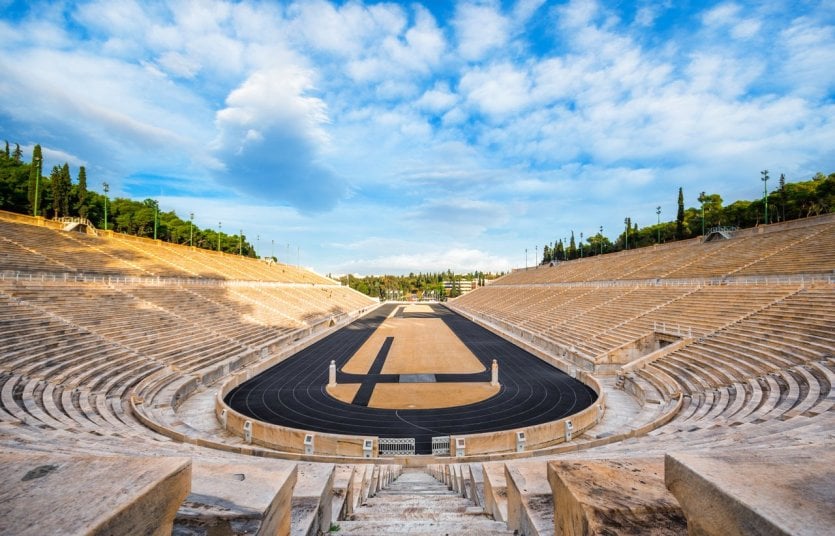
Also known as the "marble stadium", the Panathenaeus stadium dates back more than 2500 years. For centuries, it hosted gladiatorial battles, poetry competitions, chariot races and the mythical pentathlon. Perfectly preserved, the stadium has been completely renovated on the remains of the ancient temple in order to host the first modern Olympic Games: the Athens Olympic Games of 1896!
7. The National Garden
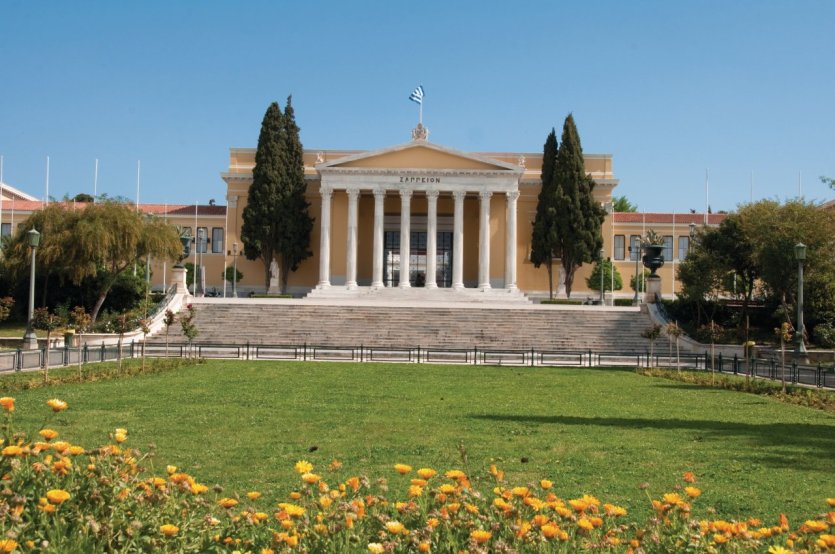
Designed in 1839 by Amalia, the first queen of Greece, she wanted to make this majestic green setting the courtyard of the royal palace. Today, the National Garden contains more than 500 species of plants from 5 continents. Well maintained and rich of several academic statues, this garden is a true jewel of neoclassical style. Amongst all this rich vegetation is the Zappeion. This building, built with the inheritance of the wealthy Evángelos Záppas, is dedicated to sports and is arguably the first building created in the world to serve the Olympic Games of the modern era. Nowadays, it can be rented for private events, but we can't imagine the price..
8. A walk in Plaka
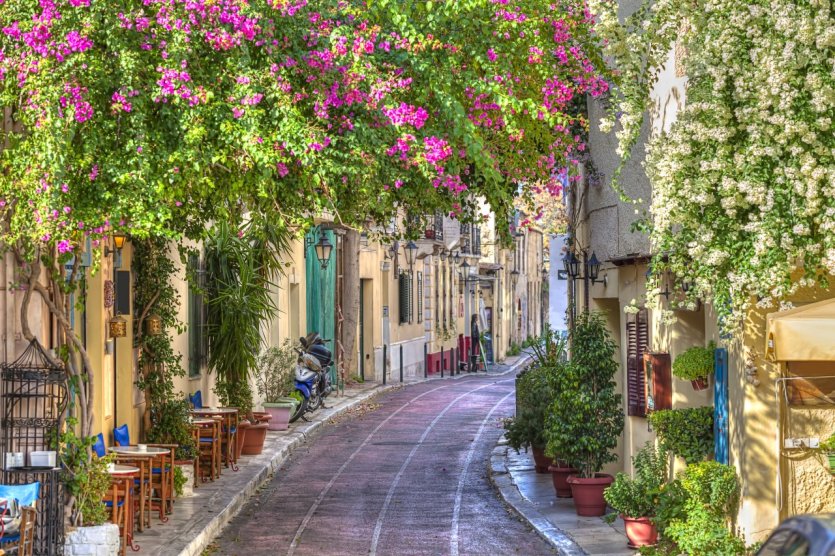
The name of this neighborhood would come from Albanian soldiers who invested this place in the past. But another theory says that this name would draw its origins from a plate discovered near the church of Saint George of Alexandria and the ancient theater of Dionysus. With its narrow streets and its beautiful neoclassical cream-colored villas, Plaka is a district not to be missed. Lively and pedestrian, there are a multitude of terraces and stores frequented by tourists as well as locals. During your walk, you will discover at each corner wrought iron balconies strewn with a thousand flowers. Colorful and ancient, this district inhabited since prehistoric times offers you the possibility to discover houses dating from the Turkish occupation, Byzantine churches and some museums. If you wish to visit Plaka in its smallest details click here and book a place for a morning guided tour of theAcropolis and Plaka!
9. The central market of Athens

Called Varvakeios agora, this central covered market is worth a stop for its atmosphere and the abundance of fresh products it offers. Located just a few steps from Omonia Square, this is where you can taste traditional Greek products from all over the country! Meat, fish, vegetables, cheese, spices or fruits, you will find what you need to enjoy at a reasonable price! Open since 1886, the Varvakeios agora has kept its old-fashioned atmosphere thanks to its auction. Even if the market has a friendly atmosphere, don't think you can bargain! Prices do not drop easily.
Wondering which specialty to try? Our article on the 15 culinary specialties to discover in Greece is here to help you!
Would you like to discover Athens through its gastronomy and taste great Greek pastries, wine, cheese and cold cuts? Book your guided tour here!
10. Climbing Mount Lycabetta
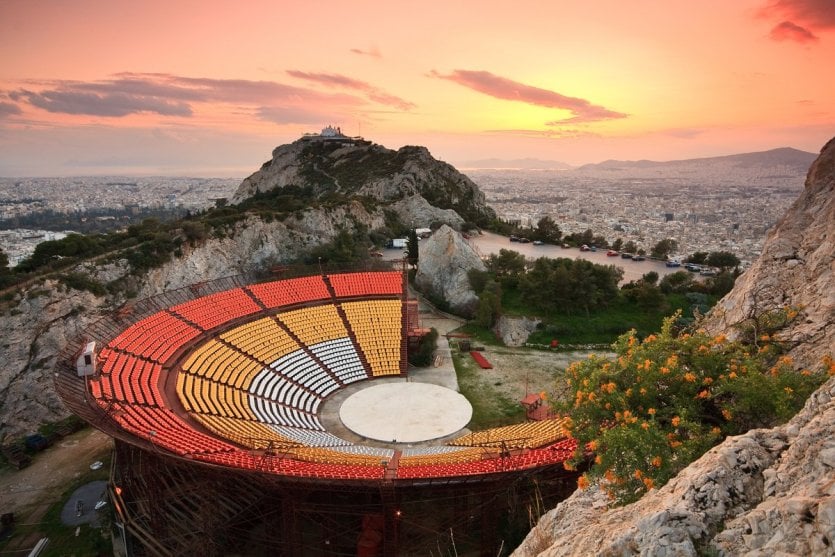
This hill is an excellent landmark wherever you are in Athens, but it is also one of the highest points of the city. Located at 277m high, the top of Mount Lycabetta will offer you a panoramic view of Athens and the Acropolis. For the ancient Athenians, it was the goddess Athena who left this rock in the middle of the city. Indeed, wanting to be closer to the sky, the goddess would have looked for a huge rock on Mount Pentele to place it on the Acropolis. But the omens being unfavorable, she left it on the way... In the past, it was Zeus who was honored at the top of Lycabetta. At present, it is Aghios Georgios, alias Saint George, who reigns supreme. Famous for having slain the dragon, this martyr who died around 303 still remains one of the most famous Christian saints.
11. The Pnyx Hill
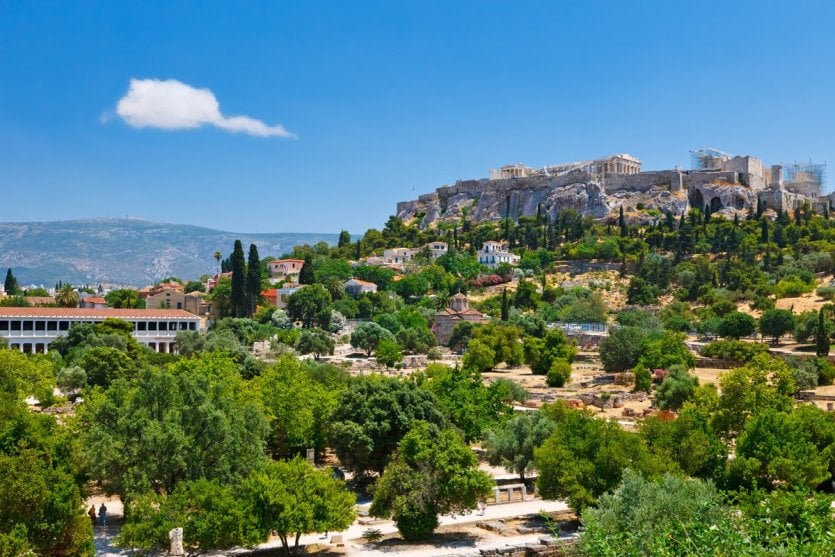
Located in the center of Athens, the Pnyx is surrounded by the hills of the Nymphs and the Muses. In ancient times, the Ecclesia, a political assembly of citizens, sat here to vote on the budget or the application of a law. But also, the members of the Boulê, the Héliée and the magistrates were elected. If it is the Pnyx which was chosen as place, it is not a chance. Indeed, the Athenians were looking for a more peaceful place than the Agora and therefore chose the hill that overlooked it: the Pnyx. This place has evolved over time and has three distinct periods by the materials used for its manufacture. If at the very beginning the wood was the main material, the stone made there little by little its place.
12. The Hill of the Muses
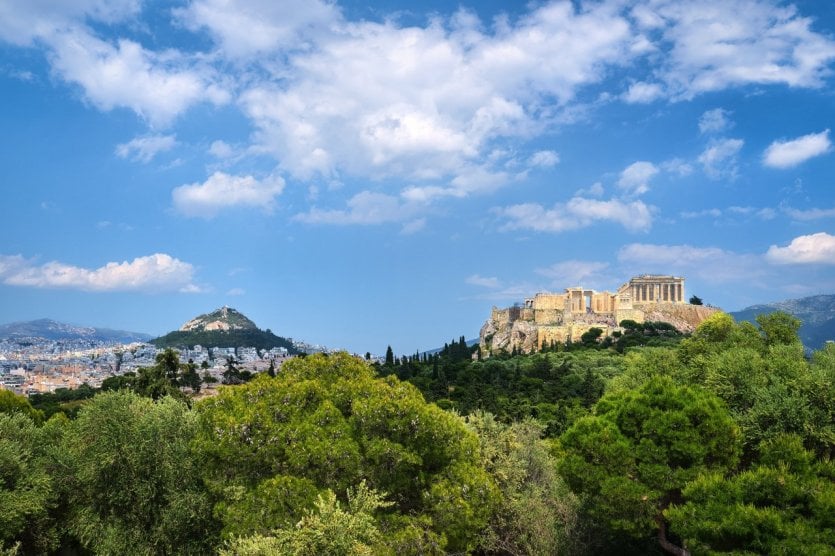
Facing the Acropolis, the Hill of the Muses and its monument of Philopappos (funerary monument built in honor of the last prince of the Commagene kingdom) offer one of the most spectacular views of the city of Athens and its surroundings. From the top of the hill (about 150 meters high) you can see the city, the Acropolis, the Parthenon, the port of Piraeus and the Aegean Sea. The walk to the top is very pleasant thanks to its shady path. The view from the top is totally different from the one from Lycabetta Hill, as you can see the city from a much higher point. Take the opportunity to photograph the Acropolis, it's the best place to do it! Are you a fan of photography? Check out our article on the 10 most Instagrammable spots in Greece!
13. The flea market of Monastiraki

You won't make a trip to Athens without passing by Monastiraki...or rather dive in. Once a Turkish bazaar, this flea market is now overrun with classic and modern stores. Move away from the main street, you will still discover a multitude of small stalls selling old decorative or utilitarian objects, chairs, tables, but also clothes or old books. The flea market is also called Gioussouroum, in reference to the name of the first antique dealer who had his store on the square.
14. Vouliagmeni Lake
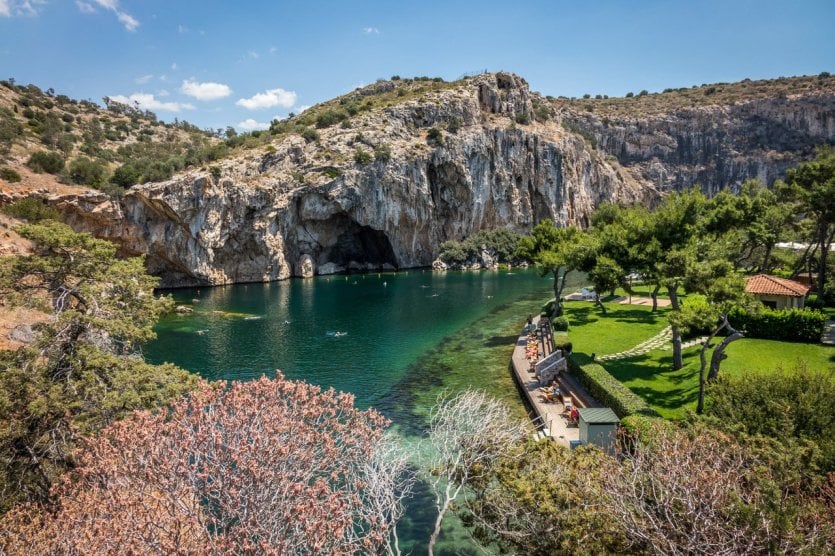
In this tiny lake, with extremely deep waters, locals bathe in summer and winter, since the water is naturally warm, between 21°C and 27°C. A real open-air spa, the lake is known for its therapeutic virtues: the older people will tell you that the water of this lake is good for the body and the doctors that it has therapeutic virtues and relieves arthritis, sciatica, lumbago, dermatological problems... You can also enjoy its small fish, popular for their pedicure sessions, as well as deck chairs and umbrellas, cabins and showers around.
15. Tanning on the beaches of Athens
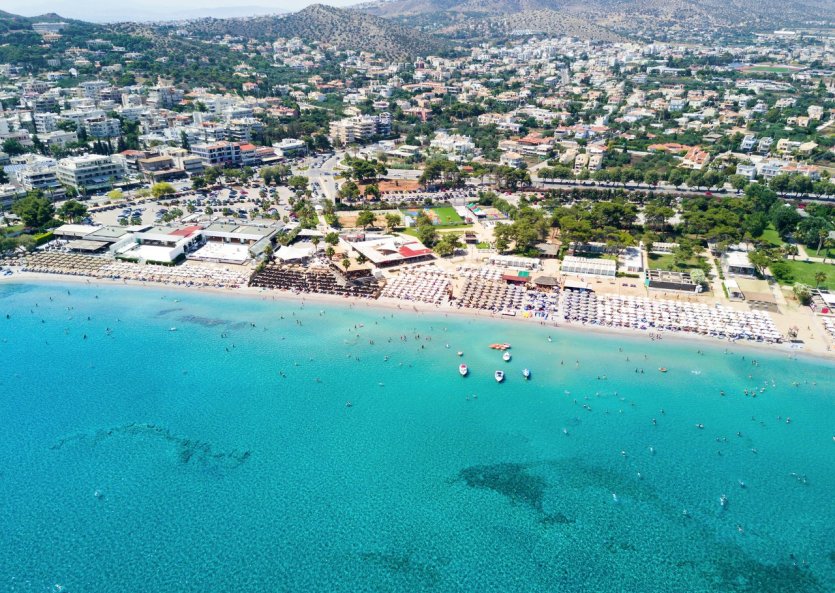
Wondering where to go to the beach in Athens? Located about 20 kilometers from the center of Athens, the seaside resort of Varkiza has beautiful private sandy beaches and good restaurants along the Saronic Gulf. The most popular private beach, the Varkiza Resort Yabanaki, is a must. You can also make stops on the road between Varkiza and Lagonissi where small creeks and coves with crystal clear waters await you!
When to go to Athens?
With a Mediterranean climate, Athens, veiled in ancient marble, ochre and a certain disconcerting grey, is attractive in all seasons. In Athens, even in winter, temperatures rarely fall below 10°C. Athenians will tell you that the microclimate of Attica is the mildest in the country. The omnipresent brightness dresses the capital and brightens its colors. In July and August, the heat is torrid (25/34 °C). It is milder from March to June (11/27 °C), then from September to mid-November (15/23 °C). The downside is that there are some winds and sandy rains from the Sahara.
To know more about it, go here!
How to get from the airport to downtown Athens?
The international airport, Venizelos, is located 35 km from the city center. To reach it, you have several options such as the metro which is the ideal way to reach the airport from any station in the city. Blue and yellow express bus lines have also been set up, which are picked up at the arrivals level. You can also choose to take a cab, the journey from the airport to the city center is now subject to a fixed price (40 € during the day and 55 € at night). Go here to know all the practical details related to your arrival.
How to visit Athens?
The metro is the most convenient way to get around Athens. It serves the main bus lines, the tramway and the suburban ( proastiakos). It consists of three lines (1, 2 and 3) of which line 1 is the one that connects Athens to the northern suburbs (Kifissia) and the port of Piraeus. You can also decide to rent a car here. It is one of the most efficient means of transportation to discover the country. However, we recommend you to be very careful when driving, as Greeks are very inventive in interpreting the traffic rules. When a car has decided to overtake you, it is not uncommon for it to do so in the left lane...
Where to sleep in Athens? Our selection of the best hotels
Athens is a tourist city with plenty of accommodation for all tastes and budgets. However, we advise you to book in advance, especially during the school vacations, in order to take advantage of the best offers and optimal availability. Here are our top 3 best hotels in Athens!
- The best value for money
Located in a pleasant and central pedestrian street, the Tempi Hotel is a family-run hotel that prides itself on giving a good welcome to its guests. It is very convenient for small budgets. To see the rates and availability, click here!
- The best located
The Pan Hotel is a hotel with an ideal location : this establishment is located only about 50 meters from Syntagma Square, so it is close to everything (metro and bus to the airport at 50 m). The service is impeccable and the comfort excellent value for money. To see the rates and availability, click here !
- The most beautiful view
To enjoy a breathtaking view of the Acropolis with the Parthenon and the Odeon of Herod Atticus, go to the Divani Palace Acropolis hotel. The hotel is very quiet, despite its central location and therefore offers the necessary rest. Remember to book in advance because in the summer, prices go up. To see the rates and availability, click here!
To discover the rest of the accommodation selection, click here!


